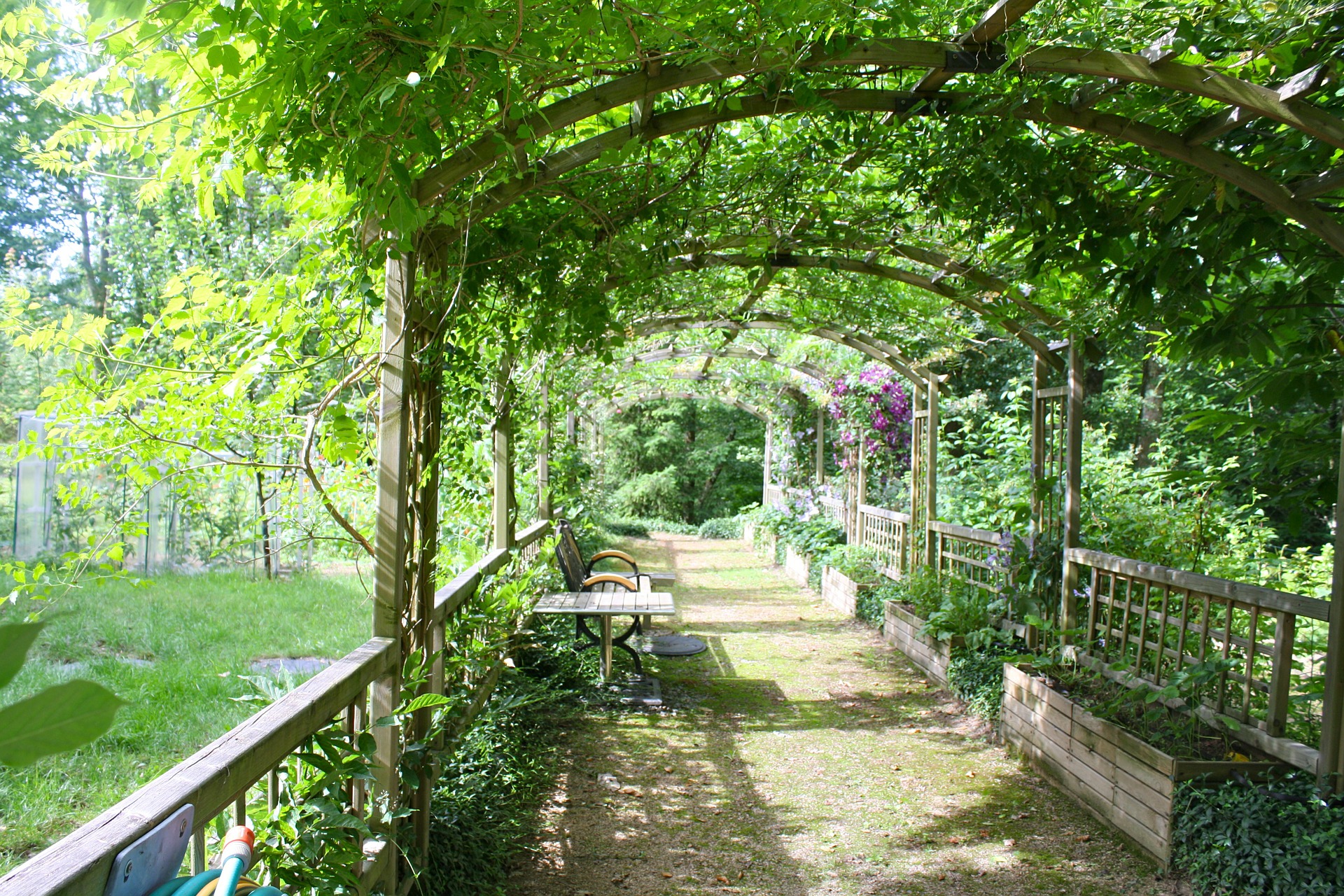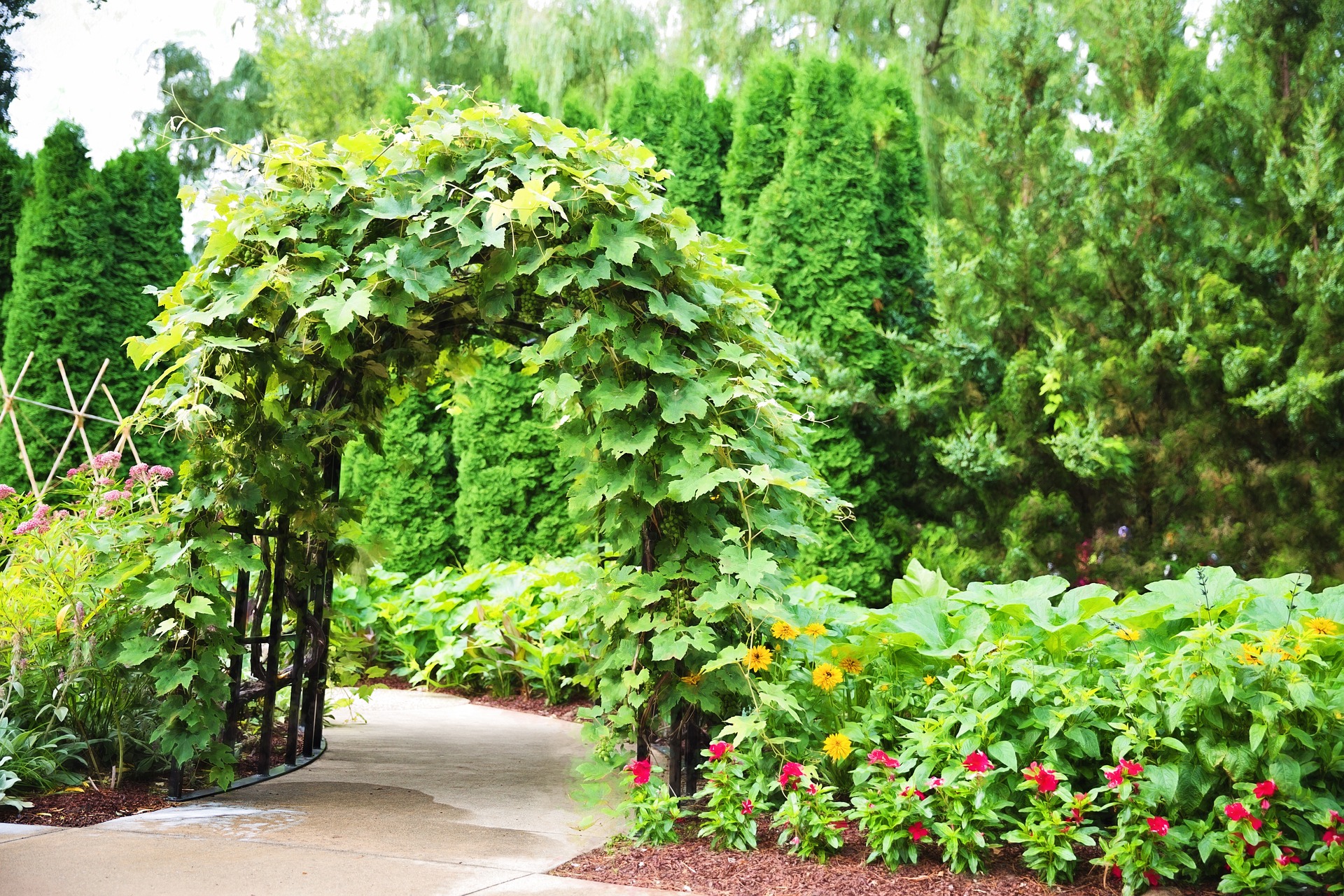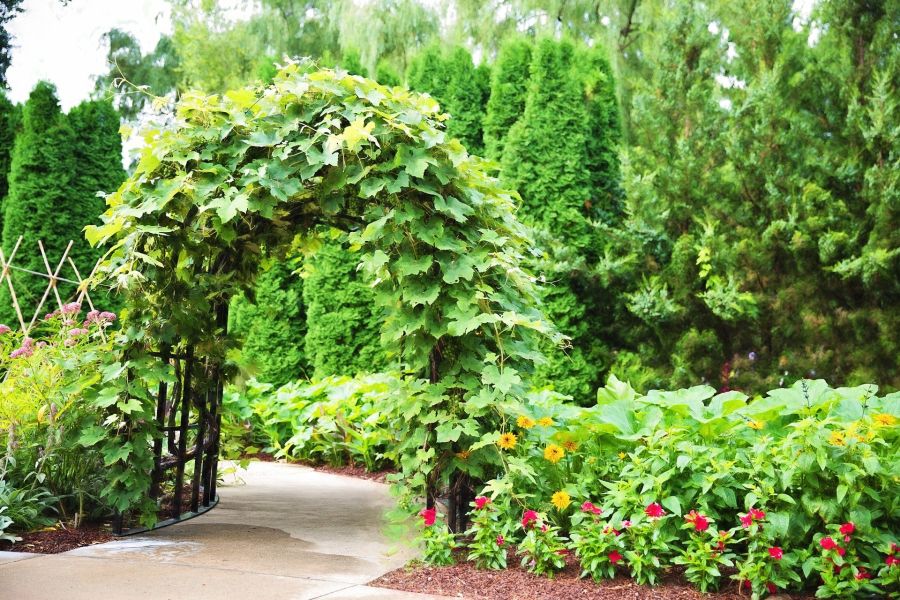Often located at the entrance to a garden or patio area, a pergola is a vine-covered welcoming gateway. Despite the fancy Italian name, a pergola is essentially just a series of 2, 3, 4 or 5 arches interconnected with vine-covered lattices. As impressive as they look, they're not particularly difficult to build—providing you have basic carpentry and gardening skills.

Before you begin
- Check out a few different styles and think about what model best fits your home and garden.
- The basic design involves two upright posts for each section, with a crosspiece connecting them.
- The posts should rise at least seven feet from the ground, and you'll want to make the archway roughly three feet wide, so you can walk through it.
- If you have room, it's also nice to leave extra space for a bench, making a shady summer-sitting spot.

Image by Jill Wellington from Pixabay
Choosing vines. A few Gerten favorites
- Clematis - blooms white, pink, red, purple, blue and burgundy
- Honeysuckle ‘Dropmore Scarlet' - blooms reddish, yellow or orange
- Wisteria ‘Blue Moon’ - known for its scented flowers
- Trumpet Vine - known for its adaptability with blooms in yellow, dark red or salmon red
- American Bittersweet - tough, vigorous vine with colorful orange "berries" that are used in wreaths and dried flower arrangements
Ask local experts what grows well where you live. NOTE: Aggressive vines will engulf nearby plants so try to leave some space between them and any cherished plants, unless you want a garden version of Attila the Hun's rampage across Europe.
Once you've decided on style and dimensions, it's time to start building.
Things You'll Need
- Post hole digger & cement (if digging post holes)
- Post spikes and sledgehammer (if using post spikes)
- Weather-resistant 4x4 posts (2 per archway)
- Level
- Measuring tape
- Crosspiece, straight or curved (1 per archway)
- Lattice for the sides and top
- Saw
- Hammer (or drill)
- Nails (or screws)
- Vine seeds or cuttings
- Vine tying material (twine, nylons, etc.)
Cut the posts from pressure-treated lumber, redwood or cedar heartwood (available at your local lumber center). To set the posts you can dig holes and plant spikes.
Digging the holes
- Use a post hole digger to create 18-inch-deep holes (Remember to calculate that 18 inches when cutting your posts! 7-ft. posts should be cut 8 1/2 feet long).
- Slide the posts in the hold.
- In firm ground you can just fill in around the hole and tamp the dirt down.
- In softer soil, or in harsher environments, you may want to pour cement into the hole to create firmer footing.
- As you install it, use a level to make sure the post is straight.
The experts at Gertens are always available to answer your questions!

